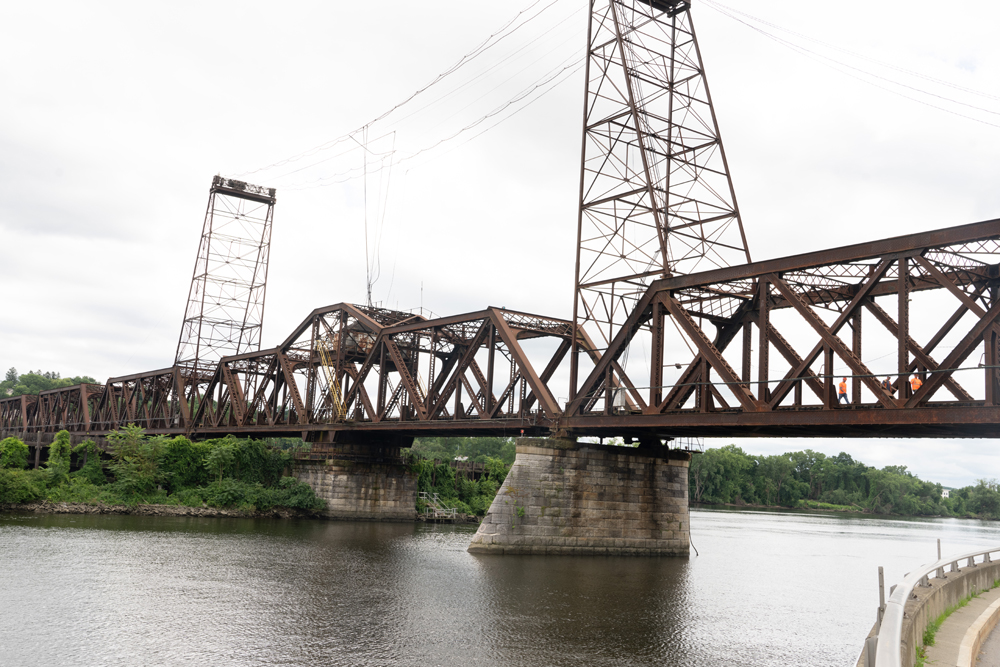
WASHINGTON — Elected officials across the country have begun announcing recipients of federal Consolidated Rail Infrastructure and Safety Improvement, or CRISI, grants ahead of the U.S. Department of Transportation’s announcement of the full list of grant recipients.
Officeholders generally have the opportunity to announce the grants to their constituents ahead of the U.S. DOT announcement. A total of 122 projects are receiving $2.477 billion in CRISI grants this year.
Grants announced Thursday and today (Oct. 24-25) include:
— $215.1 million for replacement of the Livingston Avenue Rail Bridge across the Hudson River between Albany and Rensselaer, N.Y. The bridge is 125 years old but rests on piers that are even older, dating to the Civil War. The project previously received more than $600 million from New York state [see “New York begins work to replace aging Albany rail bridge,” Trains News Wire, July 12, 2024]. A press release from U.S. Sen. Chuck Schumer says it is the largest single CRISI award in the program’s history.
— $105.6 million for the North Carolina Railroad Co., the state-owned rail operation, for infrastructure improvements at seven locations including Raleigh, Cary, Morrisville, Hillsborough, Burlington, and Greensboro to increase capacity for passenger operations and reduce freight and passenger delays. The North Carolina Department of Transportation will contribute another $34 million, the NCRR $17.8 million and Norfolk Southern $13 million for a total investment of more than $170 million. “This is an extraordinary moment for North Carolina’s rail network,” NCRR CEO Carl Warren said in a press release from Gov. Roy Cooper. “Improved freight and passenger services will accommodate one of the fastest-growing regions in the country and will enable a new era of rail capacity in North Carolina.”
— $53.3 million to the Maine Department of Transportation to upgrade two Eastern Maine Railway main lines in Penobscot, Aroostook, Washington, and Piscataquis counties, and to rehabilitate currently dormant tracks to provide a connection to the One North Bio-Industrial Park in Millinocket, Maine. The grant will provide substantial improvements for more than 140 miles of track, including more than 86,000 new crossties and more than 108,000 tons of ballast, replacing jointed rail with welded rail, improving seven grade crossings, and installing equipment defect detectors. “This investment will make critical safety and reliability upgrades to enhance freight rail service in rural Maine,” U.S. Sen. Susan Collins said in a press release.
— $50.6 million to OmniTRAX for tie replacement on short lines in four states, including the Kettle Falls Railroad connecting Kettle Falls, Wash., to Grand Forks, Canada. That railroad will install more than 24,000 ties over 29.9 miles of its San Poil Subdivision near Danville, Wash. This was among nine CRISI projects announced by U.S. Sens. Patty Murray and Maria Cantwell of Washington; their press release did not include information on the other railroads involved.
— $48.4 million for locomotive remanufacturing by the East Erie Commercial Railroad, as announced by U.S. Sen. Chuck Grassley and reported by the Business Record of Des Moines, Iowa. While the East Erie is in Pennsylvania, the project uses materials sourced in Cedar Rapids, Iowa, and reassembly in Albia, Iowa.
— $37.7 million to the Washington State Department of Transportation for final design and construction of the rehabilitation of the Palouse River & Coulee City Railroad. This follows a $72.8 million CRISI grant for the same project last year. It will allow installation of heavier rail and replacement of rotted crossties, enabling the railroad in Eastern Washington to handle heavier railcars. “This is critical for our wheat growers, and this major federal investment will help ensure Washington state farmers have the kind of infrastructure they need to succeed,” Murray said in a press release.
— $29.9 million to Iowa Interstate Railroad for the design and construction of the Colfax and DeSoto bridges near Des Moines, Iowa, and the Rock River and Atkinson bridges in Illinois. The two Iowa bridges will support shipment of large wind energy components, according to the Business Record.
— $29.8 million for Coos Bay Rail Line upgrade planning in connection with the Pacific Coast Intermodal Port project at the Port of Coos Bay, Ore. The port also received $25 million for intermodal port planning under a DOT INFRA grant announced last week [see “Coos Bay, Ore., port receives grant …,” News Wire, Oct. 19, 2024]. “Today’s award makes long overdue investments in the Coos Bay Rail Line and will improve sections of the line that have fallen into disrepair,” U.S. Rep. Val Hoyle said in a joint release with U.S. Sens. Ron Wyden and Jeff Merkley.
— $26.3 million to the Port of Kalama, Wash., for a rail expansion project, allowing the port’s tracks to handle two loaded and two empty grain trains simultaneously. The port will contribute a 20% match to the project. “This funding will increase the port’s grain terminal efficiency by 25-30%, meaning that farmers not just from Washington, but as far east as Wisconsin, can get their products to market faster,” said Cantwell.
— $23.5 million to the St. Paul & Pacific Northwest Railroad for mainline improvements in northeast Washington. The project between Chewelah, Wash., and Columbia Gardens, British Columbia, will replace two sections of older jointed rail totaling 18 miles with 136-pound welded rail, along with installation of 85,000 new concrete and steel ties, upgrading the line to Federal Railroad Administration Class 3 standards. Cantwell said the railroad “transports 2 million tons of lumber and other goods annually across eastern Washington. With this funding, the railroad will upgrade and rehabilitate over 80 miles of mainline track, speeding products to market more safely and reliably.”
— $22.8 million the Winchester & Western Railroad to rehabilitate segments of the main line in West Virginia and Maryland, removing all remaining legacy rail and replace old ties. The Winchester & Western is an OmniTRAX railroad; it was not immediately clear if this was part of the $50.6 million award to OmniTRAX mentioned above or a separate grant.
— $19.8 million to Watco to replace diesel locomotives with battery-units at various facilities, including the Packaging Corp. of America in Washington state. No additional information was immediately available.
— $19.04 million for the Cedar Rapids & Iowa City Railway for tie replacement along 56 miles of its main line between Cedar Rapids and Hills, Iowa.
— $15.98 million for the Stuben County (N.Y.) Industrial Development Agency, in partnership with Norfolk Southern, Alstom, and Binghamton University’s New Energy New York consortium, to rebuild two locomotives into battery-powered hybrids at Alstom’s Kanona facility in Bath, N.Y. “The CRISI award will help advance a new clean diesel battery hybrid technology that builds off the region’s deep history in transportation manufacturing and innovation and battery and clean energy technology,” James C. Johnson, executive director of the Stuben County IDA, said in a Schumer press release.
— $11.7 million to the Ogdensburg Bridge and Port Authority to upgrade more than 14 miles of rail line in New York’s St. Lawrence County, allowing the New York & Ogdensburg Railway to handle 286,000-pound railcars. The railroad is currently limited to 263,000-pound cars. “These improvements will greatly increase the railroad’s competitive advantage in attracting commerce to our region,” said Steve Lawrence, the port authority’s executive director, in a press release from Sen. Kristen Gillibrand.
— $11.6 million to the Columbia Basin Railroad to rehabilitate approximately 10 miles of rail line. The railroad, which operates between Moses Lake and Connell, Wash., will replace 10 miles of rail and approximately 8,000 ties, returning the railroad to a state of good repair and benefiting more than 50 customers. “This funding will help us make sure the tracks serving the Columbia Basin are in top-top shape and will safely increase operating speeds and capacity,” Murray said.
— $8.3 million to Tacoma Rail to replace the engines in four locomotives with new Tier 4-compliant prime movers, a move that will reduce NOx emissions by about 90%. “This will reduce emissions by 200 tons per year and reduce fuel consumption by more than 18,000 gallons of diesel fuel annually,” said Cantwell.
— $6.9 million to the Belpre Industrial Parkersburg Railroad to complete final design and construction to repair two bridges in Ohio and West Virginia. “The repair of these iconic structures over the Ohio River will preserve rail connections for West Virginia and Ohio industries for the next generation and beyond,” BIP co-owner Casey Cathcart said in a press release from Sen. Joe Manchin.
— $6.4 million to the Washington State Department of Transportation’s Puget Sound Rail Corridor Improvement project, eliminating rail gaps and installing electrically powered switch heaters. WSDOT and BNSF Railway will contribute a 50% match. Canwell said the work between Everett, Wash., and Vancouver will lower maintenance costs and reduce weather delays for 2 million Amtrak and Sound Transit passengers.
— $1.77 million to Rainier Rail to improve the Minnesota Street Bridge in Rainier, Wash., and three others. The improvements will allow the use of 286,000-pound railcars on a railroad that Cantwell said moves goods including aircraft materials and animal feed.






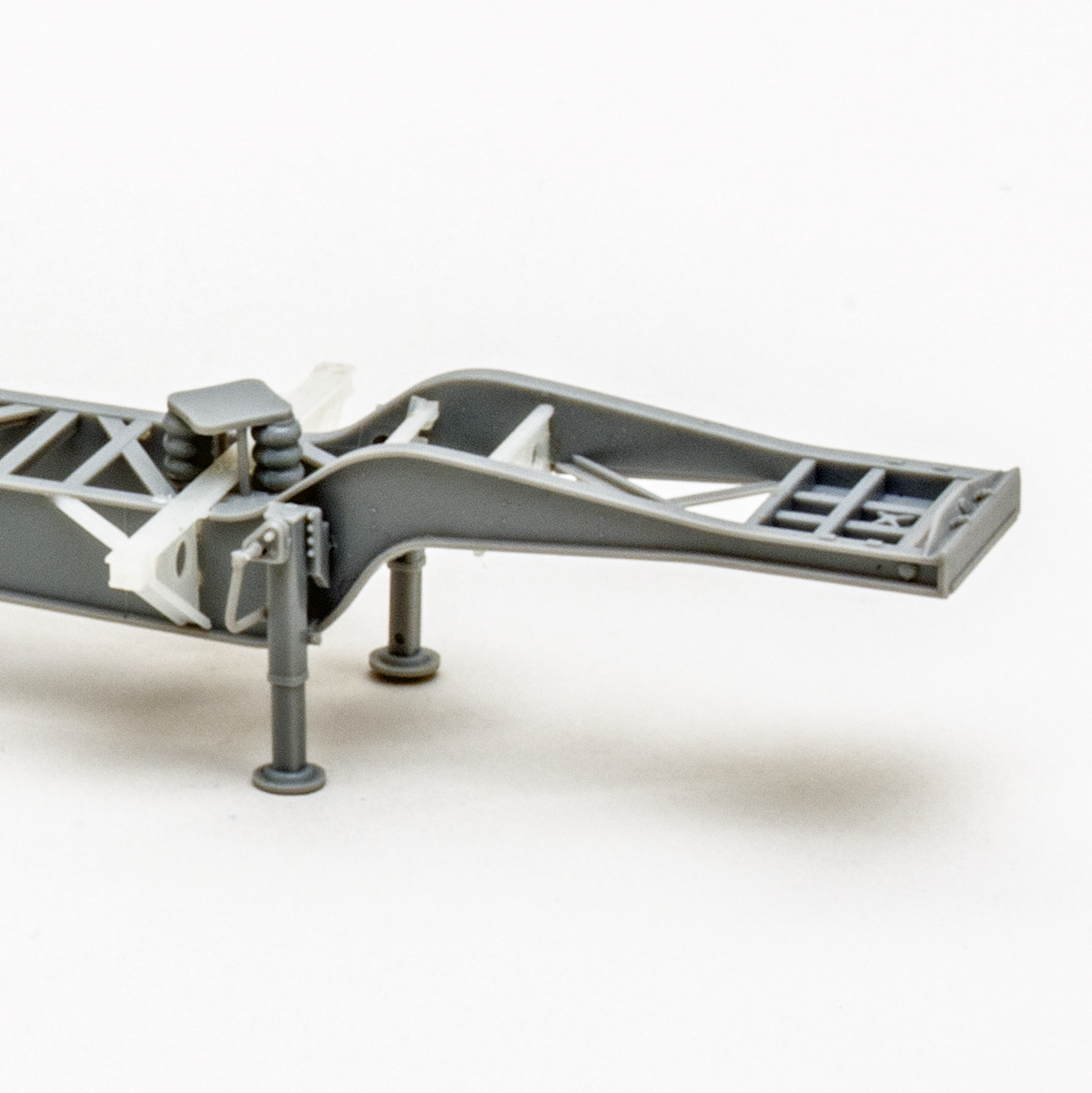
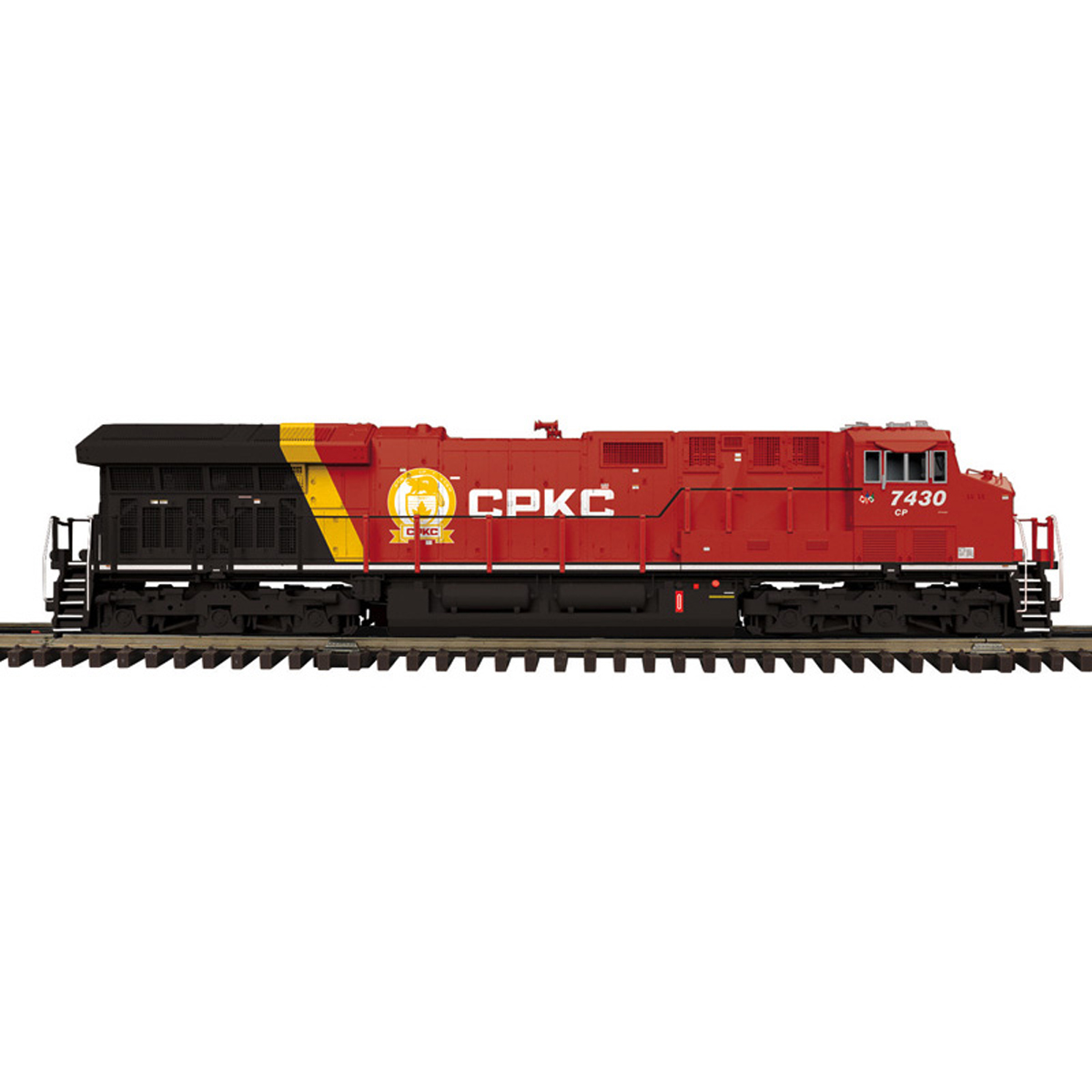
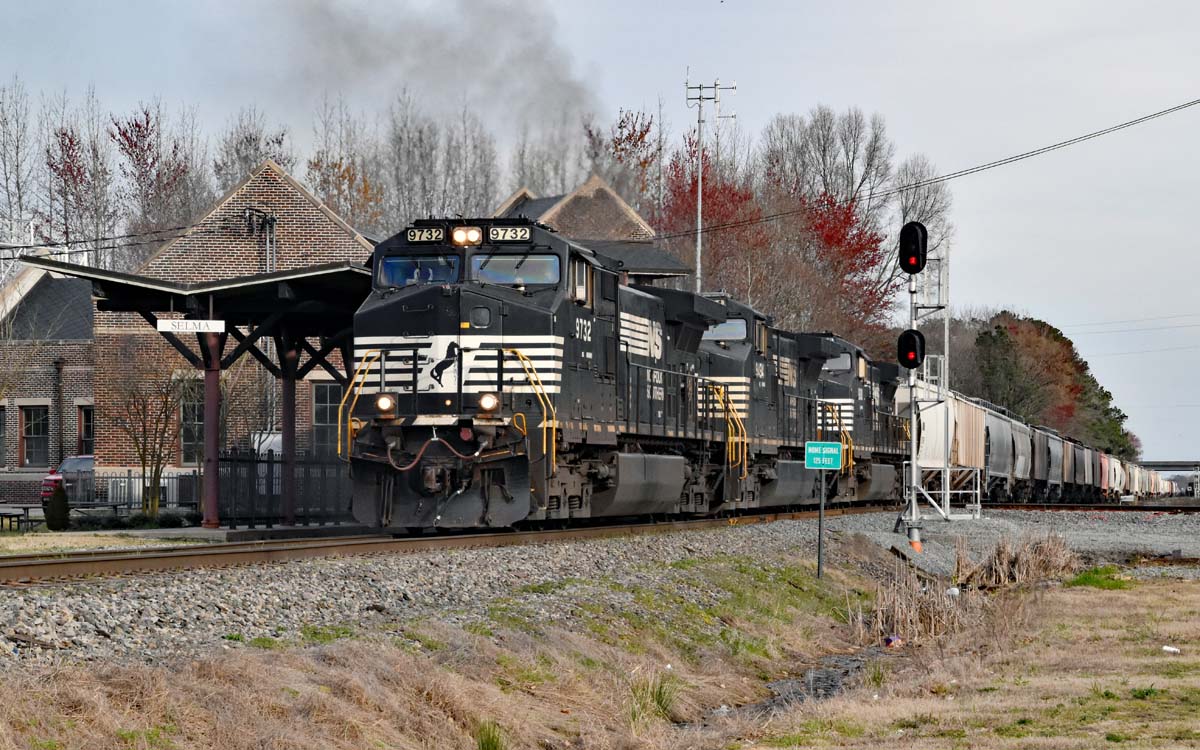
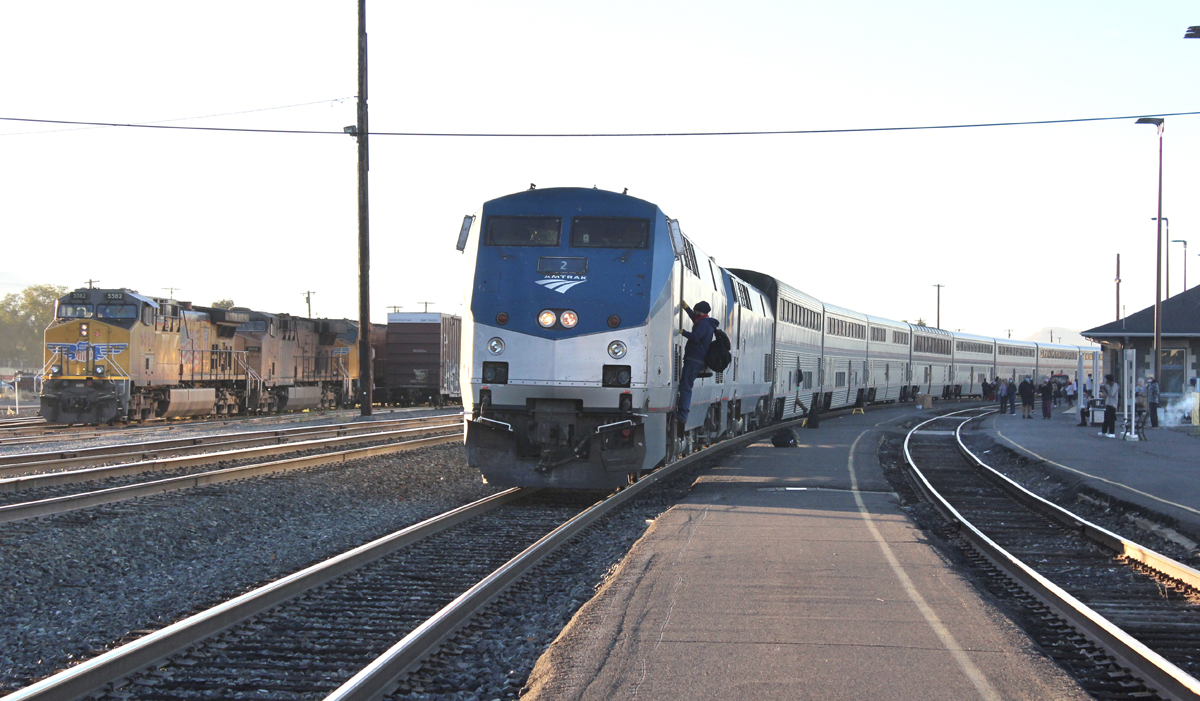




Many memories of the Livingston Avenue bridge and the freight swtiching into the 2 nd story adjacent Central Wharehouse. Als the Central Wharehouse hase been abandoned for years and is literally falling on the right of way (City of Albany has condemmed it and it will be demolished) and Amtrak is restricted to 10mph. The track lead to the West Albany Hill. one of the steepest grades on th NYC “Water Level Route and used to require a helper for westbound passenger trains. Much of the freight traffic avoided the West Albany Hill by being routed through Selkirk (later Perlman) Yard. West Albany was once one of the largest of the NYC Yards with erecting and car shops.
In his seminal “The Wealth of Nations” Adam Smith has great and thoughtful writing on the government provision of transportation infrastructure. It’s OK if the expenses are paid back through user fees. It’s very prone to be wasteful if general tax revenues are used.
I strongly agree with Mr. Smith and these projects use general tax revenue.
Politicians handing out our tax dollars like candy. I’m tired of it.
Um, taxing and spending, that’s what politicians do when they’re not fundraising or campaigning. It’s in the job description.
What I didn’t make clear enough in my comment is I don’t like federal government politicians handing out money to projects that should be funded locally. The Albany bridge being a case study. It’s in Albany—the state capital of NY. Why should taxpayers in Peoria be paying for this? If it’s of civic benefit to Albany, the city or state should figure out how to fund it. Just my 2 cents.
KURT — Railroads are part of a national network. I have no problem with federal money for the Albany bridge. But I do have a huge issue with federal money for local urban transit.
A plethora of projects are located in the Pacific Northwest, a Democratic party stronghold.
Except that must of the projects are in rural areas, which aren’t.